
Statues in a small roadside temple, Tokyo.
Part 7. Tokyo
Tokyo-Yokohama megalopolis is probably the most modern city in the world, and also one of the most densely populated. It's been estimated that more than a quarter of all people in Japan live within a 50-km radius of the Imperial Palace.
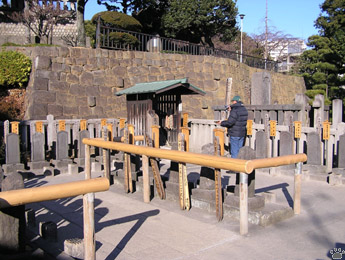
Tombs of the 47 ronin (actually, 48), Sengaku-ji, Tokyo.
|
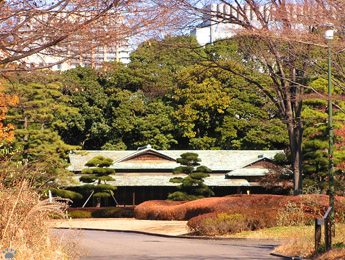
Tea pavilion, Imperial Palace, Tokyo.
|
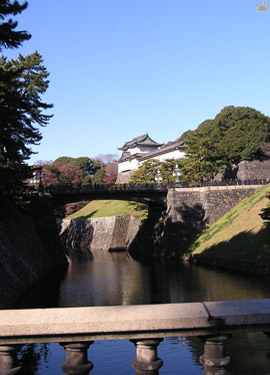
Inside the Imperial Palace, Tokyo. |
Most of the Palace is closed to public, except on December 23rd (the Emperor's birthday) and January 2nd. On these days you can see the Emperor himself - an event that attracts surprisingly few people, many of them foreigners. The speech is usually brief, and followed by "banzai" shouting. Then attending members of nationalist parties sing war-era hymns, while other visitors take photos of them with their cell phones.
|
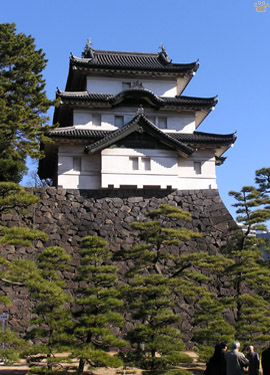
Inside the Imperial Palace, Tokyo. |
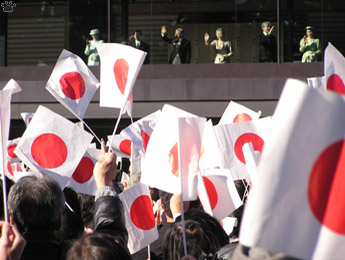
Emperor Akihito (3rd from the left) belongs to the world's oldest royal dynasty.
|
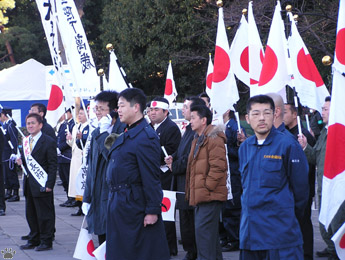
The true patriots listening to the Emperor.
|
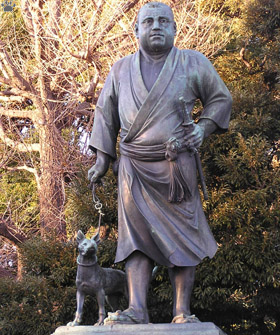
The statue of "the last samurai" Saigo Takamori walking his dog
in Ueno Park is one of Tokyo's most beloved monuments. |
Tokyo also has many museums, including the country's most interesting one (Tokyo National Museum - unfortunately, it was closed during my visit), a few interesting temples and shrines, excellent libraries, world's largest fish market (see photo in the preceding pages), famous shopping districts, and many beautiful parks.
|
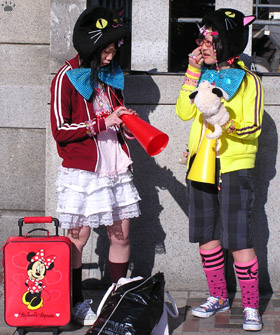
Teenage girls in colorful costumes and other unusual crowd often
hang out in and around Yoyogi Park. Tokyo. |
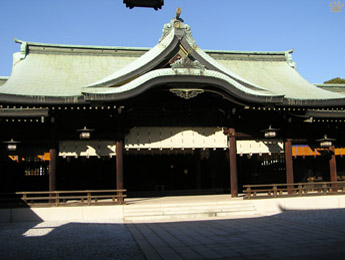
Meiji-jingu temple, Yoyogi Park, Tokyo.
|

December in Yoyogi Park, Tokyo.
|
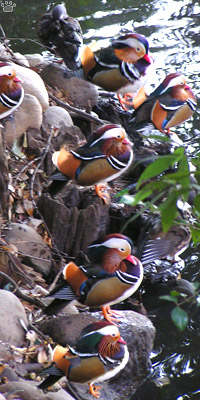
Mandarin ducks |
Yoyogi Park is the best one - it has a temple and a museum dedicated to Meiji era, and some beautiful old-growth forest. It is also the best place in Japan to see mandarin ducks in winter. These charming birds are now almost extinct in mainland Asia, and rare in Japan despite protection and installation of numerous nest boxes on riverside trees.
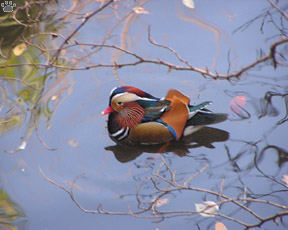
Mandarin ducks (Aix galericulata), Yoyogi Park, Tokyo. |
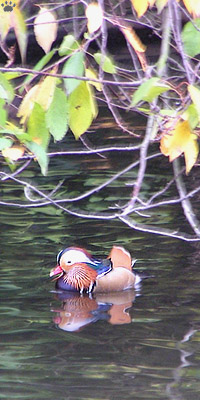
Mandarin ducks |
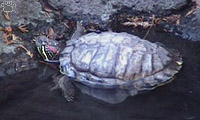
Slider (Trachemys scripta), Tokyo. |
Tokyo is such a huge city that the temperature inside it is sometimes 10 deg. Centigrade higher than in the countryside. In winter, its streets and parks are an island of color surrounded by snow-covered land. You can even see introduced North American slider turtles in some ponds on a sunny December day.
|
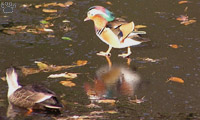
Mandarin ducks, Tokyo. |
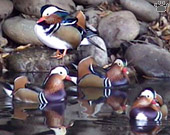 |
 |
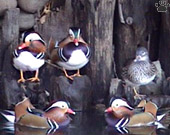 |
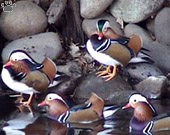 |
| Mandarin ducks, Yoyogi Park, Tokyo. |
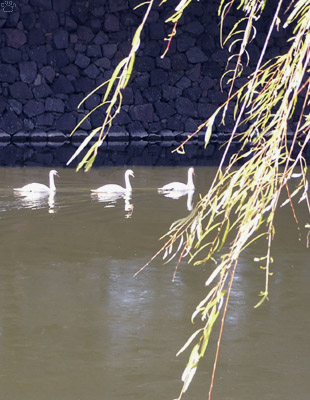
Mute swans (Cygnus olor), Imperial Palace, Tokyo. |
Swans are much more common in Japanese parks and wetlands than mandarin ducks. Mute swan is an introduced species; whooper and tundra swans breed in Siberia, but come to Honshu in winter.
|
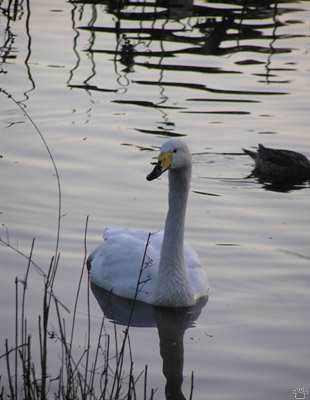
Whooper swan (C. cygnus), Akan Nat'l Park, Hokkaido. |
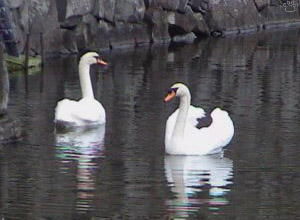 |
 |
 |
| Mute swans, Imperial Palace, Tokyo. |
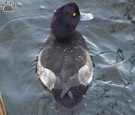
Tufted duck (Aythya
fuligula), Yokohama. |
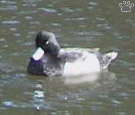
Greater scaup (A. marila),
Yokohama. |
Tokyo is located on Kanto Plain, which used to be a huge wetland. Thousands of Siberian ducks still visit city ponds, rivers, and bays in winter.
|
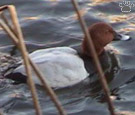
Common porchard (A. ferina), Yokohama. |

Tufted duck (Aythya
fuligula), Yokohama. |
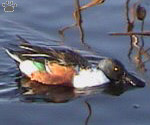 |
 |
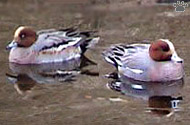 |
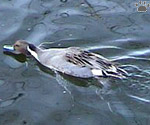 |
| Wintering ducks: Northern shoveler (Anas clypeata), spot-billed ducks (A. poecilorhyncha), Eurasian widgeons (A. penelope), Northern pintail (A. acuta). Ueno Park, Tokyo |
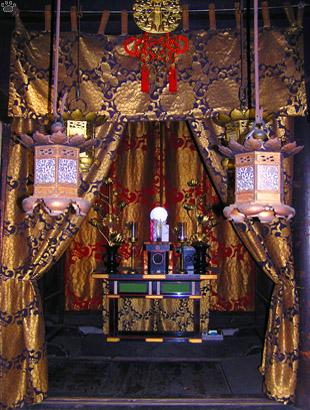
Temple interior, Kamakura. |
Of many small places around Tokyo, Kamakura is the most interesting place to visit. It is a quiet seaside town, with a lot of old temples and shrines, and nice forest trails in nearby hills. |
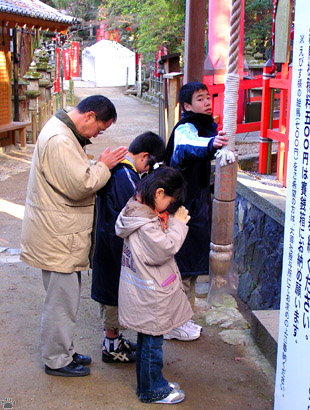
Praying in a Shinto shrine, Kamakura. |
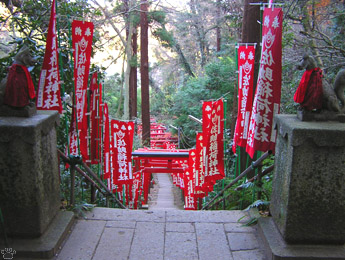
Stone foxes guard a forest walkway to a Shinto shrine. Kamakura. |
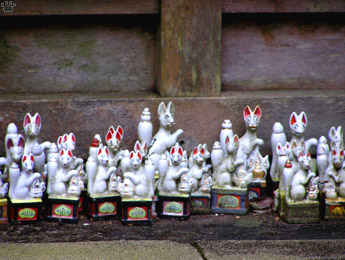
Fox statues in a Shinto shrine, Kamakura. |
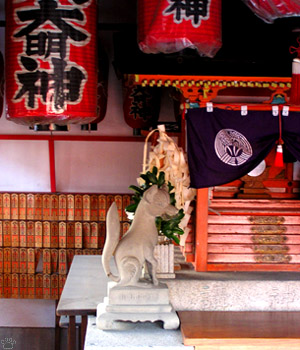
Fox statue in a Shinto shrine, Kamakura. |
Stone statues of foxes are common in Shinto shrines dedicated to Inari, the god of grain crops. Foxes were considered Inari's messengers, and some statues have keys in their mouths - these are keys to granaries. |
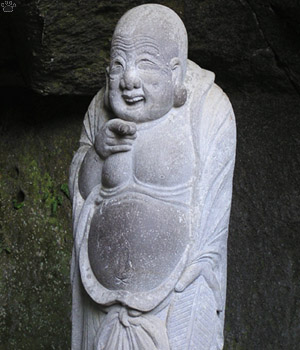
Buddhist statue, Kamakura. |
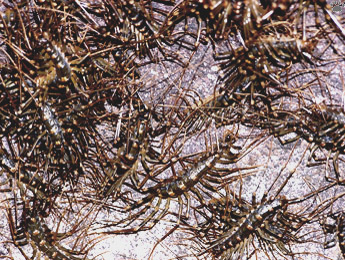
Giant Scutigera centipedes in a temple cave, Kamakura. |

Watercolor wall painting, Kamakura. |
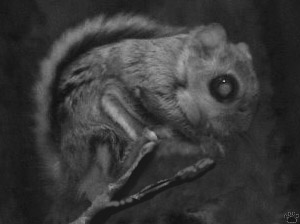
Japanese flying squirrel (Pteromys momonga), Kamakura. |
Densely wooded hills around Kamakura are full of wildlife, including some not-so-cute creatures in sacred caves - don't go in without a flashlight!
|
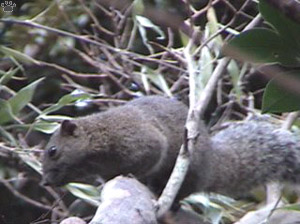
Japanese squirrel (Sciurus lis), Kamakura. |
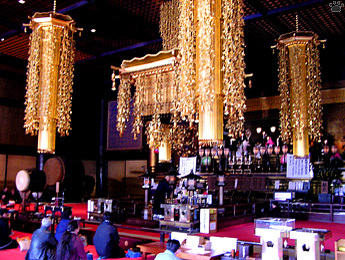
Inside Shinsho-ji Temple, Narita. |
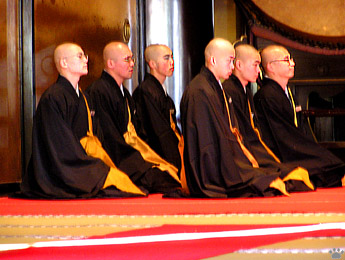
Buddhist monks, Shinsho-ji Temple, Narita. |
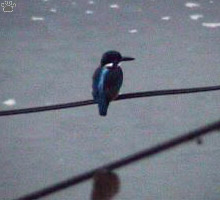
Blue kingfisher (Alcedo atthis), Narita. |
Another interesting temple town is Narita, with its beautiful Narita-san Shinsho-ji Temple surrounded by a park. Like most (but not all) old temples and shrines in Japan, it's been reconstructed many times since being founded more than a thousand years ago. It is just five minutes by train from Tokyo's Narita International Airport - very convenient if you have a short stopover between flights.
|
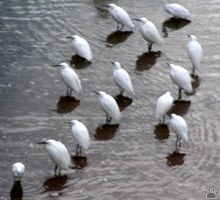
Little egrets (Egretta garzetta), Narita. |
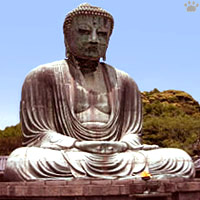
This famous Buddha statue(cast in 1252) was once
inside a temple, but it was washed away by a
tsunami in 1495. Kamakura. |
Part 8: Ise
Back to Part 6 Home
|